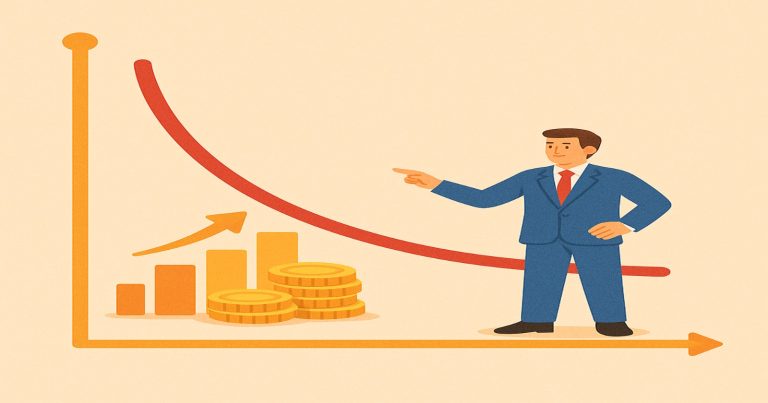Aggregate demand (AD) is defined as the total demand for goods and services in an economy provided a certain price level and time. It is one of the important concepts that aid in the explanation of why the economy may be experiencing fluctuations in activity, such as periods of growth and recession. Aggregate demand is the sum of all individual demands in an economy, which includes consumer spending, business investments, government expenditures, and net exports-the difference between exports and imports. Aggregate demand is important to understand because it determines the level of overall economic output and the employment levels in the economy.
What Is Aggregate Demand?
It is the total amount of goods and services that can be purchased from households, businesses, government, and foreigners in an economy at different prices. Aggregate Demand is a macroeconomic tool used in the assessment of the total demand for a country’s goods and services, compared at different price levels. It can be utilized by policymakers and economists in determining the condition of an economy.
Components of Aggregate Demand
- Consumer Spending (C): Total household spending on goods and services.
- Investment Spending (I): Firm purchases of capital goods such as machines and equipment.
- Government Spending (G): Total spending of the government agencies on goods and services.
- Net Exports (X-M): The difference between a country’s exports and imports.
The aggregate demand curve typically slopes downward, meaning the total quantity of goods and services demanded will rise as the overall price level drops. As the price level rises, the quantity demanded falls.
How Do You Calculate Aggregate Demand?
To calculate aggregate demand, you use a simple formula that sums up all the components of demand within an economy. The formula is:
Where:
– C represents consumer spending on goods and services.
– I represent investment spending by businesses on capital goods.
– G represents government spending.
– X represents exports (goods and services sold to other countries).
– M represents imports (goods and services bought from other countries).
Example of Calculation:
Consider an economy where:
– Consumer spending (C) = $1 trillion,
– Investment spending (I) = $500 billion,
– Government spending (G) = $300 billion,
– Exports (X) = $200 billion,
– Imports (M) = $100 billion.
The aggregate demand for this economy would be calculated as follows:
This means the total aggregate demand in this economy is $1.9 trillion. The components can fluctuate based on consumer confidence, business investment decisions, government policies, and changes in global trade.
What Are Some Limitations of Aggregate Demand?
Aggregate demand is one of the most important concepts in macroeconomics. It is the total demand for goods and services in an economy at any given overall price level and time. However, it has limitations to its effectiveness as a tool for economic analysis.
Price Level Sensitivity
The aggregate demand curve assumes that with lower prices, the demand increases, and with higher prices, demand decreases; however, such a relation may not be found at all. For example, people may not react with increased demand when prices are falling during times of an economic crisis because their fear of uncertainty keeps them from spending even after the price falls.
Short-Term Focus
Although aggregate demand helps summarize and hence analyze the short-term fluctuations, it would be less useful if used for analyzing long-term growth. It mainly focuses on the demand side of an economy and fails to address the long-term factors affecting an economy, like productivity growth and technological innovations on its supply side.
Ignores Supply Constraints
Aggregate demand does not take into account supply-side constraints, such as availability of labor or capacity. In such cases where the demand is much higher and such substantial bottlenecks do indeed exist, therefore, even if demand does rise, the production might not have the capacity to pick up.
Assumes Static Government Spending
Assuming that the level of government spending is predetermined to be zero does not reflect real reality because changes in fiscal policy will affect aggregate demand. For example, suppose that a recession occurs at the same time as an increase in government spending. This can raise aggregate demand, but this kind of interaction is not captured in the model presented above.
Impact of Globalization
More recent globalization has still made the domestic aggregate demand relationship with overall performance complex. International shocks, which are changes in global oil price or trade policy, can significantly affect the domestic aggregate demand, yet these tend to be outside of the domain of the policymaker at the national level.
What’s the Relationship Between GDP and Aggregate Demand?
There is a direct relationship between Gross Domestic Product and aggregate demand, in that aggregate demand is the total of a country’s spending on its goods and services, which directly corresponds to the Gross Domestic Product. Gross Domestic Product, essentially, is a measurement of the total value of all goods and services produced within a country during a given period, usually a year. Since there is both consumption and production in the measurement of Gross Domestic Product, aggregate demand has a very close relationship with Gross Domestic Product.
GDP as a Measure of Output
To the contrary, GDP represents total output. Aggregate demand is what represents the total expenditure on that output. When aggregate demand increases, firms respond to higher levels of output with increased levels of production to meet that greater demand and increase the GDP.
AD and Economic Cycles
The economy goes through successive stages of the business cycle, such as boom, recession, or recovery from fluctuations in aggregate demand. Should aggregate demand fall drastically, there will be a recession (falling GDP), and if it rises, then there may be some form of economic growth that could eventually boom into (rising GDP).
Price Levels and GDP
In fact, as aggregate demand increases, businesses increase production, and GDP increases. However, should the former increase faster than supply, it causes inflation, where the growth of price levels is without a corresponding increase in the actual GDP.
Role of Aggregate Supply
However, aggregate demand is what instigates the short-term fluctuations of the GDP level. The long-run growth of GDP depends as well, not only on aggregate demand but also on aggregate supply factors, mostly the expansion of the labor force and productivity rises. Therefore, both aggregate demand and supply have to be balanced for an economy to sustain its growth.
Aggregate Demand Formula
The aggregate demand formula is a simple equation that sums up the components of demand in an economy:
Where:
– C = Consumer Spending: The total amount consumers spend on goods and services.
– I = Investment Spending: The expenditures by businesses on capital goods.
– G = Government Spending: The total government expenditure on goods and services.
– (X – M) = Net Exports: The difference between a country’s exports (X) and imports (M).
This formula provides a snapshot of the total demand for goods and services at a given price level and time. It is widely used in macroeconomic analysis to determine the overall health and performance of an economy.
Breakdown of the Formula
- Consumer Spending (C): This is the largest component of aggregate demand, representing the expenditures made by households on a wide range of goods and services, from groceries to entertainment.
- Investment Spending (I): This includes the spending made by businesses on physical assets like machinery, buildings, and inventory, which helps increase productive capacity.
- Government Spending (G): Governments contribute to aggregate demand through expenditures on public goods, infrastructure, education, healthcare, and defense.
- Net Exports (X-M): This component captures the net effect of trade. If a country exports more than it imports, it contributes positively to aggregate demand. Conversely, if imports exceed exports, it can reduce aggregate demand.
Conclusion
Aggregate demand aggregates the total demand for goods and services in an economy at different price levels. It includes consumer spending, investment, government expenditures, and net exports. Hence, it serves as the starting point in understanding economic activity. Particularly concerning supply-side constraints and global economic influences. The importance of aggregate demand with GDP is that its changes cause fluctuations in the short run in the level of economic activity. Policymakers work with aggregate demand to devise policies that stabilize and expand the economy, and therefore it forms a cornerstone of macroeconomic analysis.
Aggregate Demand FAQs
What is aggregate demand?
Aggregate demand is the total demand for goods and services in an economy at various price levels over a specific period.
How do you calculate aggregate demand?
Aggregate demand is calculated using the formula:
AD = C + I +G + (X-M)
where C is consumer spending, I is investment, G is government spending, and (X – M) represents net exports.
What are some limitations of aggregate demand?
The restrictions involved are price level sensitivity, short-term focus, ignoring the supply constraints, assuming static government spending, and not accounting for globalization impacts.
How does GDP relate to aggregate demand?
GDP is the total output of an economy, and aggregate demand is just the total spending on that output. Sometimes, the aggregate demand increase has resulted in increasing GDP.

